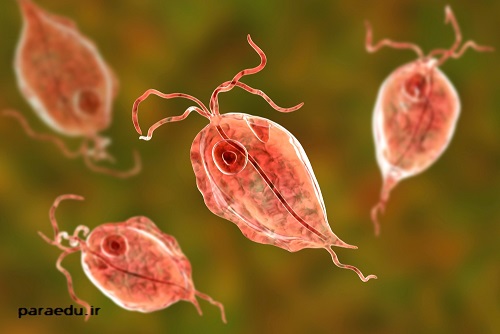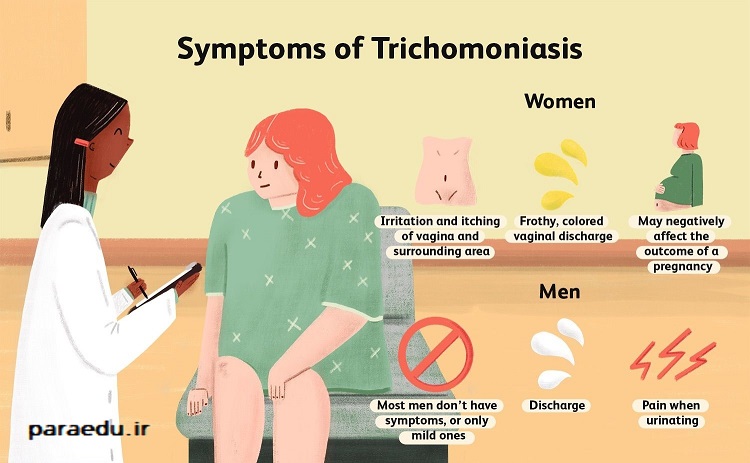Trichomonas vaginalis is a microscopic parasite that causes trichomoniasis, a common and curable sexually transmitted infection (STI). It affects both men and women, but women are more likely to have symptoms and complications. In this article, we will explain what Trichomonas vaginalis is, how it is transmitted, what are the signs and symptoms, how it is diagnosed and treated, and how it can be prevented.
?What is Trichomonas vaginalis
Trichomonas vaginalis is a single-celled organism that belongs to the group of protozoa. It has a pear-shaped body, four flagella (whip-like structures) that help it move, and an undulating membrane (a thin layer of tissue) that covers part of its body. It also has an axostyle (a rod-like structure) that protrudes from its posterior end
Trichomonas vaginalis lives in the lower genital tract of humans. In women, it can infect the vagina, cervix, urethra, and bladder. In men, it can infect the urethra, prostate, and seminal vesicles. It cannot survive outside the human body for long, so it is usually transmitted through sexual contact.

?How is Trichomonas vaginalis transmitted
Trichomonas vaginalis is transmitted through sexual contact with an infected person. This includes vaginal, oral, or anal sex. The parasite can also be spread by sharing sex toys, towels, or underwear with an infected person
Trichomonas vaginalis can infect anyone who is sexually active, regardless of their age, gender, or sexual orientation. However, some factors can increase the risk of getting trichomoniasis, such as:
- Having multiple sexual partners
- Having unprotected sex
- Having a history of other STIs
- Having a weakened immune system
- Being pregnant
?What are the signs and symptoms of Trichomonas vaginalis infection
Trichomonas vaginalis infection can cause different signs and symptoms depending on the person and the site of infection. However, many people with trichomoniasis do not have any symptoms at all, especially men. This means that they can unknowingly pass the infection to others
When symptoms do occur, they usually appear within 5 to 28 days after exposure to the parasite. The most common symptoms in women include:
- A foul-smelling, yellow-green, or gray vaginal discharge
- Vaginal itching, burning, or irritation
- Pain or discomfort during urination or sex
- Bleeding or spotting between periods
- Lower abdominal pain or cramps
The most common symptoms in men include:
- A clear, white, or yellow discharge from the penis
- Urethral itching, burning, or irritation
- Pain or discomfort during urination or ejaculation
- Frequent or urgent need to urinate
Trichomonas vaginalis infection can also cause complications if left untreated, such as:
- Increased risk of getting or transmitting HIV and other STIs
- Pelvic inflammatory disease (PID) in women, which can lead to chronic pain, infertility, or ectopic pregnancy
- Prostatitis (inflammation of the prostate) or epididymitis (inflammation of the tube that carries sperm) in men, which can cause pain, fever, or infertility
- Preterm labor, low birth weight, or neonatal infection in pregnant women and their babies

?How is Trichomonas vaginalis diagnosed and treated
Trichomonas vaginalis infection can be diagnosed by a health care provider who will ask about the symptoms, sexual history, and perform a physical examination. The diagnosis can be confirmed by taking a sample of fluid from the vagina or the urethra and testing it for the presence of the parasite. This can be done by using a microscope, a culture, an antigen test, or a DNA test.
Trichomonas vaginalis infection can be treated with antibiotics, such as metronidazole, tinidazole, or satranidazole. These drugs kill the parasite and cure the infection. They are usually taken orally, either as a single dose or as a course of treatment for several days.
It is important to follow the instructions of the health care provider and take the medication as prescribed. It is also advisable to avoid alcohol while taking the antibiotics, as it can cause nausea, vomiting, or headache.
It is also essential to inform and treat all sexual partners of the infected person, even if they do not have any symptoms. This will prevent reinfection and further spread of the parasite. It is recommended to abstain from sex until both partners have completed the treatment and have no symptoms.

?How can Trichomonas vaginalis infection be prevented
Trichomonas vaginalis infection can be prevented by practicing safe sex and having regular check-ups. Some of the preventive measures include:
- Using condoms correctly and consistently every time you have sex
- Limiting the number of sexual partners and being faithful to one partner
- Getting tested and treated for STIs, especially if you have symptoms or a new partner
- Avoiding sharing sex toys, towels, or underwear with others
- Keeping good hygiene of the genital area
Trichomonas vaginalis is a common and curable STI that can cause unpleasant symptoms and complications if left untreated. It can be easily diagnosed and treated with antibiotics. It can also be prevented by practicing safe sex and having regular check-ups. If you think you may have trichomoniasis or any other STI, do not hesitate to consult your health care provider and get tested and treated as soon as possible.
 انگل شناسی پزشکی Medical Parasitology
انگل شناسی پزشکی Medical Parasitology




